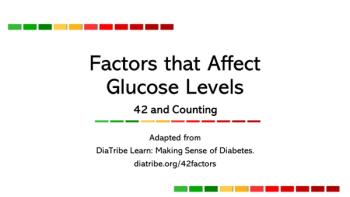
Radiating Midsternal Pain in a Middle-aged Woman
A 45-year-old woman is admitted for evaluation of intermittentmidsternal chest pain that began 48 hours earlier.The pain is intense and radiates down both arms to theelbows; it has been accompanied by several episodes ofnausea and diaphoresis. She denies classic angina pectorisbut reports that she has experienced episodes of chestdiscomfort that is similar to her current pain-but muchless severe and without radiation-for about 3 months.She has no history of dyspnea on exertion, orthopnea, orparoxysmal nocturnal dyspnea.
A 45-year-old woman is admitted for evaluation of intermittentmidsternal chest pain that began 48 hours earlier.The pain is intense and radiates down both arms to theelbows; it has been accompanied by several episodes ofnausea and diaphoresis. She denies classic angina pectorisbut reports that she has experienced episodes of chestdiscomfort that is similar to her current pain--but muchless severe and without radiation--for about 3 months.She has no history of dyspnea on exertion, orthopnea, orparoxysmal nocturnal dyspnea.HISTORY
The patient has asthma; osteoarthritis, which requiredright knee arthroscopy; and hypertension. Shetakes montelukast sodium and theophylline. She is a longtimesmoker (more than 1 pack per day). Her motherdied at age 60 years of lung cancer; her father, aged 76years, has hypertension.PHYSICAL EXAMINATION
This anxious, obese (100 kg [220 lb]) woman is inmoderate distress because of her chest discomfort. Temperatureis 36.6oC (98oF); heart rate, 108 beats per minute;respiration rate, 18 breaths per minute; blood pressure,154/100 mm Hg; and oxygen saturation, 98% on 2 Lof oxygen via nasal cannula. No pallor or eyelid xanthelasmais noted. Neck veins are not distended, and chest isessentially clear. Although tachycardia makes auscultationof the heart difficult, no gross murmurs or gallopsare audible. No abdominal tenderness, masses, or ascitesis noted. Examination of the extremities reveals no tendinousxanthoma or peripheral edema.LABORATORY AND IMAGING RESULTS
A chest radiograph shows no infiltrates, pulmonarycongestion, or cardiomegaly. Results of a hemogram andchemistry panel are normal except for leukocytosis of14,700/μL, a random blood glucose level of 175 mg/dL,and a total cholesterol level of 353 mg/dL. The results ofcardiac enzyme measurement are pending. The ECG isshown here.Which of the following is the most likely cause ofthis patient's chest pain?A. Acute pericarditis with a large pericardial effusion.B. Coronary artery spasm (Prinzmetal angina).C. Massive pulmonary embolism.D. Acute myocardial infarction (AMI) that involves theright coronary artery.CORRECT ANSWER: D
The first set of enzyme markers reveals a cardiac troponin I level of 10.3ng/mL (normal, 0 to 2 ng/mL) and total creatine kinase level of 400 IU/L(normal, 20 to 250 IU/L) with an MB fraction of 9.2%. These results confirmthe ECG findings that indicate AMI. This case illustrates the value of the ECG,even in an era of essentially routine use of coronary artery angiography.Atypical features of this patient's presentation include her gender and relativelyyoung age. However, her very worrisome chest pain syndrome accompaniedby systemic findings of nausea, diaphoresis, sinus tachycardia, andleukocytosis are classic signs and symptoms of AMI. In addition, her cholesterollevel is extremely elevated and she is a long-time heavy smoker. The initialECG and abnormal enzyme levels essentially confirm the diagnosis ofevolving AMI.In this setting, electrocardiographyplays an important role. It helpswith several diagnostic and managementfunctions, including:
- Identification of the artery relatedto the infarct and determination ofthe amount of myocardium at risk;this information guides decisions regardingthe urgency and nature ofrevascularization procedures.
- Demonstration that reperfusion hasoccurred.
- Identification of either conductionabnormalities or arrhythmias thatare prognostic in their own right andalso may require appropriate acutemanagement.1
The specificity of electrocardiographyin identification of the involvedartery(ies) is limited by variations inanatomy, previous AMI, and/or previousbypass procedures. However, inmany instances electrocardiographyhas rather good sensitivity and specificity;the 2 most useful ECG patternsare those of inferior AMIs that involvethe right coronary artery and anterior AMIs that involve the left anteriordescending coronary artery.This patient's ECG has the typical pattern of an inferior AMI that involvesthe right coronary artery: ST-segment elevation in the inferior leadswith ST-segment elevation in III greater than ST-segment elevation in II,accompanied by ST-segment depression in I and/or aVL. This pattern hasbeen shown to have a 90% sensitivity and a 71% specificity for occlusive involvementof the right coronary artery.
1,2
In addition, the ST-segment depressionsand T-wave inversion seen here suggest ongoing ischemia--if notocclusion--in the anterior wall distribution of the left anterior descendingartery. Overall, the ECG suggests that significant myocardium is at risk andpoints to a need, in this relatively young patient, for aggressive and promptrevascularization.The remaining choices involve conditions other than AMI in which STsegmentelevations are typically seen on the ECG. Pericarditis (choice A) is associatedwith chest pain and ST-segment elevations. However, the pain of pericarditisis usually sharp--in contrast to the ache/pressure normally encounteredin AMI. Moreover, the ST-segment changes in pericarditis are diffuseand are seen in precordial and limb leads. Such findings would indicate the simultaneousinvolvement of multiple coronary vascular territories, which rarelyoccurs in AMI.
3
Thus, choice A is not correct.Acute massive pulmonary embolism (choice C) is typified on ECG by thewell-known but seldom encountered (perhaps 15% of cases) S
1
Q
3
T
3
pattern.However, anterior ST-segment elevation can occur as well. In any event, thispatient does
not
have significant dyspnea and her oxygen saturation is normal,which makes pulmonary embolism unlikely.Finally, Prinzmetal angina (choice B), which results from intense proximalcoronary artery spasm that induces ischemia and produces ST-segmentelevation in the ECG leads of the affected artery, is usually short-lived (unlikethis patient's condition).
4
Also, the ST segment returns to baseline, and thereis no resultant myocardial damage with enzyme spillage, as is seen in thiswoman.
Outcome of this case.
Angiography revealed a tight 99% stenosis of themid-right coronary artery, which was the dominant artery. This was successfullytreated by balloon angioplasty and stenting. Also noted was a long 100%occlusion of the distal half of the circumflex artery. Rather small-caliber coronaryarteries with milder areas of diffuse disease were noted elsewhere.Subsequent lipid studies revealed type IIB hyperlipidemia. An echocardiogramshowed an ejection fraction of 50%. The patient was discharged on an intensivemedical regimen; her long-term prognosis is guarded.
References:
REFERENCES:
1.
Zinetbaum PJ, Josephson ME. Use of the electrocardiogram in acute myocardial infarction.
N Engl J Med.
2003;348:933-940.
2.
Herz I, Assali AR, Adler Y, et al. New electrocardiographic criteria for predicting either right or left circumflexartery as the culprit coronary artery in inferior acute myocardial infarction.
Am J Cardiol
. 1997;80:1343-1345.
3.
Wang K, Asinger RW, Marriott HJ. ST-segment elevation in conditions other than acute myocardial infarction.
N Engl J Med.
2003;349:2128-2135.
4.
Oliva PB, Potts DE, Pluss DG. Coronary arterial spasm in Prinzmetal angina: documentation by coronaryangiography.
N Engl J Med.
1973;288:745-751.
Newsletter
Enhance your clinical practice with the Patient Care newsletter, offering the latest evidence-based guidelines, diagnostic insights, and treatment strategies for primary care physicians.

































































































































































































































































































